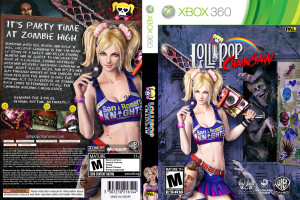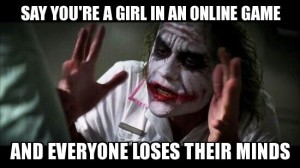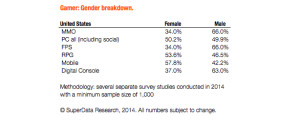Elizabeth Quezada
WRT 205
February 29th 2016
Conversation on Food Politics & Safety: Choices
You can very easily go onto today’s favorite search engine and type in, “Are GMOs harmful?” or “Is organic food really that much better?” into the search bar and pull up some quick and dirty answers to those questions. Really though, you are just a concerned consumer being tossed into the large, messy bowl of food politics and safety. You’ll find a mesh of articles telling you what the author thinks and a healthy dose of statistics thrown your way if you’re lucky. Believe it or not, food safety and politics does not just pertain to the consumer’s health based needs! Money, politics, and the environment are a huge portion of food safety. All representing a delicious three course meal you can’t pull your eyes from. When it comes to food safety, I belong to the team that’s pro-labeling. I believe that despite the benefits of either side, consumers deserve the right to know what they choose to put in their system.
What do people have to say about this discourse?
Some individuals argue between the efficiency and benefits of either organic or conventional farming while others argues that consumers should have a choice within the food system. Food Inc., a documentary that argues against GMOs, questions the food system and attacks the opaqueness of the system. “Do you know where your food comes from?” This documentary attempts to bring forth information for their audience to process while ultimately trying to get you on their side of the argument. The director of the film, Robert Kenner, attempts to take consumers on a journey from the supermarket aisle to meat-packing plants in order to expose how many big corporations, and to what length they put profit ahead of the health and safety of their consumers, workers and the subsistence of the American farmer. Kenner does a fantastic job at distributing information and using the medium of film to their advantage and he also really stretches out the conversation that finds its way to our dinner tables every night. While the film does give their viewers a mouthful of information, it is heavily biased in arguing more for one side instead of bringing out the facts and letting you decide what side you want to eat grass from. One of my favorite pieces to read in regards to the issues around food safety and politics, “Organic Illusions,” written by a farmer, Blake Hurst, suggests that though the government cannot afford a form of organic agriculture, they can afford to provide a system with choices. However, he does not present his claim in a helpful or resourceful manner. Carrying a heavily sarcastic tone and providing a much more entertaining read that can be read throughout the masses, Hurst maintains a “Who cares about organic or conventional farming?” attitude and suggests without any real traceable sources, that what really matters in this complex food system is not a romanticized “version of agriculture” (Hurst) but “a food system that provides lots of choices,” (Hurst). Unfortunately, as entertaining as he may be, he does not provide enough credible information to really let his audience decide the importance of conventional agriculture versus organic agriculture. He attacks organic farming more than he complains about farming in general.
Although I do understand the benefits of either side, I think the two styles of agriculture can exist together but the government and food companies such as Perdue and sustainable agriculture company, Monsanto could afford to be a little more transparent, and less sketchy when it came to interviews (Food Inc.) . Truthfully, labeling the food at your local grocery store is more about allowing the consumer to be more aware and informed of their decisions. Nearly 50 nations worldwide require that all GE foods be labeled as such (Dahl), so what’s the big deal? California tried to pass the California Right to Know Genetically Engineered Food Act back in November of 2012 (Dahl) and had it been passed, California would have been the first state to require the labeling of food products. The bill sounds pretty until you know what it really does and then you wonder, what’s the point? The bill would have exempted “meat, dairy, and other products from animals that were themselves genetically engineered. It would have also exempted food sold in restaurants and alcohol,” (Dahl). Though it wouldn’t have proved as effective as it could have been, this was considered a step forwards in the food revolution. Consumers are getting more fed up as “food producers resist the attempts of government agencies to institute control measures, and major food industries oppose pathogen control measures by every means at their disposal,” (Nestle). Only 700 FDA inspectors must oversee 30,000 manufacturers and processors, 20,000 warehouses, 785,000 commercial and institutional food establishments, 128,000 grocery and convenience stores, and 1.5 million vending operations (Nestle). That number seems incredibly low for a population as large as the American population. The statistics speak for themselves here, how safe do you really think your food really is? Go ahead, type in E Coli and Salmonella outbreaks in your search bar and determine just how frequent they are. Consumer safety should always be the government’s priority but money allows illness and corruption to really slip through the cracks , just ask your local farmers.
While many like Hurst believe that a romanticized version of farming would be too costly, I do agree that labeling for consumer health reasons proves to be a solution everyone could be happier with. There’s evidence according to Dahl and his source, Hansen, to suggest a connection between GE Crops and allergenicity, which provides more than enough reason to label foods. Data from the Centers of Disease control and Prevention show an 18% increase in reported food allergy cases among children between 1997 and 2007 (Dahl) that alone proves to be alarming as a consumer myself. Hansen, a senior staff scientist at Consumers Union, suggests a theoretical example of how tracking health risks would work: “If you take a gene from the kiwifruit, put it into a tomato and the tomato gets turned into sauce for your pizza, and there’s an allergic reaction…this is not like [allergy concerns associated with] conventional foods because the problem is going to for one particular [bio-engineered modification]. How are you going to figure out unless it’s labeled? You can’t and that’s why so many countries have labeling,” (Hansen), except Us of course. There should always be a choice presented for consumers, for health–for ethical reasons, our government after all is supposed to be for the people and we made that choice, didn’t we?
Sources:
- Hurst, Blake. “Organic Illusions – AEI.” AEI. The American, 1 Oct. 2012. Web. 03 Feb. 2016.
- Nestle, Marion. Safe Food: The Politics of Food Safety. Berkeley: U of California, 2010. Print.
- Food, Inc. Dir. Robert Kenner. Movie One, 2008.
- Dahl, Richard. “To Label or Not to Label: California Prepares to Vote on Genetically Engineered Foods.” Environ Health Perspect Environmental Health Perspectives 120.9 (2012). Jstor. Web. 18 Feb. 2016.
Reflection Questions:
- Describe your understanding of the “writer’s project”? How were you able to identify the texts’ “project”? Discuss your own “project” as it pertains to this particular blog article.
The writer’s project is essentially what the intentions an author has and what they argue for in their piece. Well usually the author defines their project in their introduction but sometimes it can be found at the end. The best way is to read the whole piece to get a raw understanding of what the author wants you, as a reader to process.
- Describe your completion of the “Sorting it Out” workshop? What sections were most beneficial to the development of your ideas—and why? Discuss how this workshop assisted in development of draft and/or assignment organization?
I completed the “Sorting it Out,” workshop sheet at home in order to prepare and organize my ideas for the article I wanted to write. Sections B, D and E were the most helpful and beneficial to me. This was because I was able to start writing what concerned me from some of the articles and what I enjoyed. Realizing these concerns really helped me start to chip a path towards what I wanted to bring to my article. Sections D and E really just helped me organize and hone in on some of my thoughts and ideas.
- Describe your understanding of synthesis. What is its importance? How did it manifest within your drafts and/or final blog article? Provide examples.
The way I understand synthesis is that it is the incorporation of all the texts being used and how they flow together in order to build on one another. Synthesis is important because it’s how, as a writer you will bring all of your texts into a conversation with each other. I tried to create a conversation within my ideas and what I had gotten out of the articles and you can mostly see that towards the end of my article when I focus a little more on the Hurst and Dahl articles.
- Describe your own accomplishment (ofsomething) during this unit.
I was able to maintain my own voice throughout the articles and voice my opinions while still being informative to an audience.
- Discuss the evolution of the main idea. Where did you begin (include the example) and show its progress (again, include example) throughout the drafting/revision process. To what do you attribute its evolution?
Well I knew after rereading Hurst’s articles that I liked what he was talking about, his ‘project’ and his style of writing. However, I was really turned off by his lack of credible information and felt like he could have done much more to contribute to the conversation about food safety and food politics. I started to research food safety related articles and went through about ten of them when I finally reached Dahl’s article which helped me mold my main idea. I was already leaning towards an argument about having choices but having a credible source like Dahl allowed me to expand on that and contribute to Hurst’s project and to the food safety conversation.
- Discuss what organizational strategies you implemented in order to structure this blog article. Provide examples from a section(s) of an earlier draft and other excerpts in later drafts to support your response.
I really uses the ‘Sorting it out’ worksheet to help me organize my thoughts and article structure. I knew I needed to start off in a relatable way to catch readers but then rely on the sources I had and what I had gathered in ordered to make the texts flow into a conversation with my argument. In my first draft I did not speak too much of Food Inc. and its project as a film which is something that changed in my final draft. I devoted at least two or three more lines to the film.
- Provide an example of the final draft where you successfully synthesize 3 texts in a concise and direct manner. Discuss how this evolved throughout the drafting process for you.
My third and fourth paragraph use Food Inc, Nestle, and Dahl to contribute to the discourse on food safety as they’re used to build on my argument.
- Discuss the evolution of the ‘lede’ in earlier drafts and its final version (provide examples of each): where did you begin, what feedback did you receive, and how did it end up in final blog article?
I think my ‘lede’ is more towards the end of my article. It started off there and it ended there. I didn’t change much because I liked it as it was and thought it fit pretty well with my article and what I wanted to use to grab a potential reader’s attention. Victoria helped me decide on my ‘lede’ in class and adjust certain things. For example, I wanted make a pun on the word us for the Unites States and it did not cross my mind that I should uppercase the letter ‘u’ in us to Us and keep it italicized like I had originally so that the reader could understand. Small but beneficial changes that made me happier with my article.
9.) Name a specific writing/researching/revision goal you’d like to work on during the next Unit projects.
I’d like to continue writing out my idea’s on paper in order to structure out my articles for the next couple of projects. Normally I try and fail but I had been able to get further than previous attempts and it really helped me organize my thoughts and contain my original thoughts throughout my paper. That’s normally really hard for me to do.





